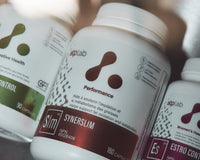Cardio Myths

While on vacation, sitting peacefully at the beach, I try to tune out the conversations around me although at times, I find them very entertaining none the least. We can get a full grasp of why people can’t reach their goals since they seem to believe anybody who are giving their two cents about any subject, which they obviously don’t know about.
“If you reach your max heart rate, you get a heart attack.”
Fortunately, it doesn’t work that way. For the untrained individual, yes, it obviously increases the risk of a cardiovascular accident. However, even for the trained individual, before you reach that max, there is a greater chance of something else failing than your heart. Muscle cramps, joint issues, it all depends on the task at hand.
Calculating your max heart rate, using the formula (220-age = Max ), can be a good starting point to evaluate your workouts.
60-70% of your maximum heart rate corresponds to light and relaxed training, also known as the fat burning zone.
70-85% is already quite strenuous training and is the aerobic capacity training zone.
+85% maximum heart rate you enter the red zone, which is associated with a lack of oxygen and can only be sustained for a limited time. Enter the Anaerobic Lactic zone aka Power endurance. Think of the H.I.I.T. (high-intensity interval training) where you alternate lower and higher intensity bouts of work.
Heart rate (HR) monitoring is not an exact science. Heart rate variability can be altered with air quality, age, training abilities and health, sleep, digestion, etc.
HR recovery after training is a great indication of heart health as well as the resting heart rate. Recovery of the heart rate immediately after exercise is a function of vagal reactivation, a fundamental component of the parasympathetic branch of the autonomic nervous system, responsible for stimulation of "rest-and-digest" or "feed and breed". A decrease in vagal activity is known to be a risk factor for death. A delayed fall of the heart rate after exercise might be an important prognostic marker. A delayed decrease in heart rate within the first minute of graded exercise is a strong predictor of overall mortality in most research.
Last, but not least, resting heart rate is also a great marker of cardiovascular health. Elite athletes can be as low as 35 bpm where the healthy and active population are generally between 50 and 60bpm at rest.
Coach Eric





